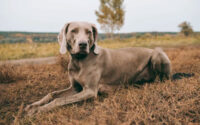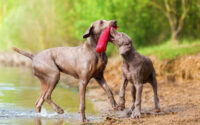Alaskan malamute bite force
Alaskan Malamutes, known for their majestic appearance and formidable strength, have long served as powerful companions capable of pulling heavy sleds through snow and ice. With their wolf-like features and robust build, these dogs have also garnered attention for their potential bite force, a topic that sparks curiosity among dog owners and enthusiasts. This article delves into the various aspects of the Alaskan Malamute’s bite, comparing it with other breeds, and discussing the science behind their jaw power, alongside valuable insights into training and safety measures.
Alaskan Malamute Bite: The Facts
Table of Contents

The Alaskan Malamute is a large breed of domestic dog originally bred for their strength and endurance to haul heavy freight as sled dogs. Alongside their physical prowess, they possess a strong bite. While there is a range of bite force measurements, an Alaskan Malamute’s bite force is typically estimated around 230 pounds per square inch (PSI). However, these numbers can fluctuate based on individual dogs, their health, and how they are measured. Despite this impressive force, Malamutes are not generally known to be aggressive animals. They are, in fact, often described as affectionate and loyal companions. Yet, their powerful bite serves as a reminder of their capacity for exerting significant pressure when necessary.
Understanding Malamute Jaw Power

To appreciate the jaw power of the Alaskan Malamute, one must understand the breed’s anatomy and history. Malamutes have a strong, muscular build with a broad head and powerful jaws. These features are the result of selective breeding for tasks like pulling heavy sleds across frozen landscapes, which required dogs with exceptional strength and endurance.
- The skull structure provides ample leverage for jaw muscles.
- Their large teeth are designed for maximum grip and shearing.
- The genetic background of Malamutes contributes to their powerful bite.
The jaw strength of a Malamute is not solely for their work duties, it also plays a role in how they interact with their environment, play, and defend themselves if necessary.
Comparing Malamute Bite to Other Breeds

| Breed | Estimated Bite Force (PSI) |
|---|---|
| Alaskan Malamute | 230 |
| German Shepherd | 238 |
| Rottweiler | 328 |
| American Pit Bull Terrier | 235 |
| Kangal | 743 |
When comparing the Alaskan Malamute’s bite force to other breeds, it’s evident that while they have a strong bite, they are not at the top of the list. Breeds such as the Kangal and Rottweiler have significantly higher bite forces, often exceeding 300 PSI. Even the German Shepherd, a breed commonly used in police and military roles, has a bite force that is comparable to that of the Malamute. Nonetheless, it’s important to recognize that bite force is not the sole indicator of a dog’s potential for aggression or danger.
The Science Behind Bite Force

The bite force of any canine is influenced by various biological and physical factors:
- Skull size and shape are directly proportional to bite strength.
- Muscle mass and distribution around the jaws impact the force exerted.
- Tooth structure and the mechanics of the jaw contribute to the efficiency of the bite.
- Genetics play a significant role in determining the potential bite force of a breed.
Studies into canine bite force often utilize bite force transducers that measure the pressure exerted when a dog bites down on a specialized device. These scientific measurements provide a more accurate understanding of the capabilities of different breeds.
Training to Mitigate Malamute Bites

Given their potential for a powerful bite, proper training of Alaskan Malamutes is crucial:
- Socialization from a young age helps prevent fear-based biting.
- Consistent, positive reinforcement training encourages good behavior.
- Establishing a clear pack hierarchy reduces the chances of dominance-related biting.
- Teaching bite inhibition ensures that the dog understands how to moderate the force of its bite.
- Obedience training is essential for command recognition and control.
Owners should work with professional trainers who have experience with large breeds to ensure that their Malamutes are well-behaved and know how to interact appropriately with humans and other animals.
Safety Around High Bite Force Dogs

Living with or interacting with dogs that possess a high bite force requires adherence to specific safety protocols:
- Never leave small children unsupervised with a large breed dog.
- Educate children on how to interact safely and respectfully with dogs.
- Ensure the dog is well-exercised and mentally stimulated to prevent frustration.
- Always approach unfamiliar dogs with caution and respect their space.
- In situations where a dog may feel threatened or stressed, give the dog an escape route.
- Utilize proper training equipment, such as muzzles, responsibly when needed.
Responsible ownership and education about dog behavior are the best defenses against unwanted incidents involving high bite force dogs like the Alaskan Malamute.
In conclusion, the Alaskan Malamute’s bite force is a testament to its history and physical capabilities as a sled-pulling breed. While not the strongest bite in the canine world, it is nevertheless impressive and warrants a responsible approach to training and safety. Understanding these powerful animals can help foster harmonious relationships between Malamutes, their owners, and the wider community, ensuring that their strength is channeled positively and safely. Through education and care, we can admire and respect the Alaskan Malamute for both its loving companionship and its remarkable physical attributes.


